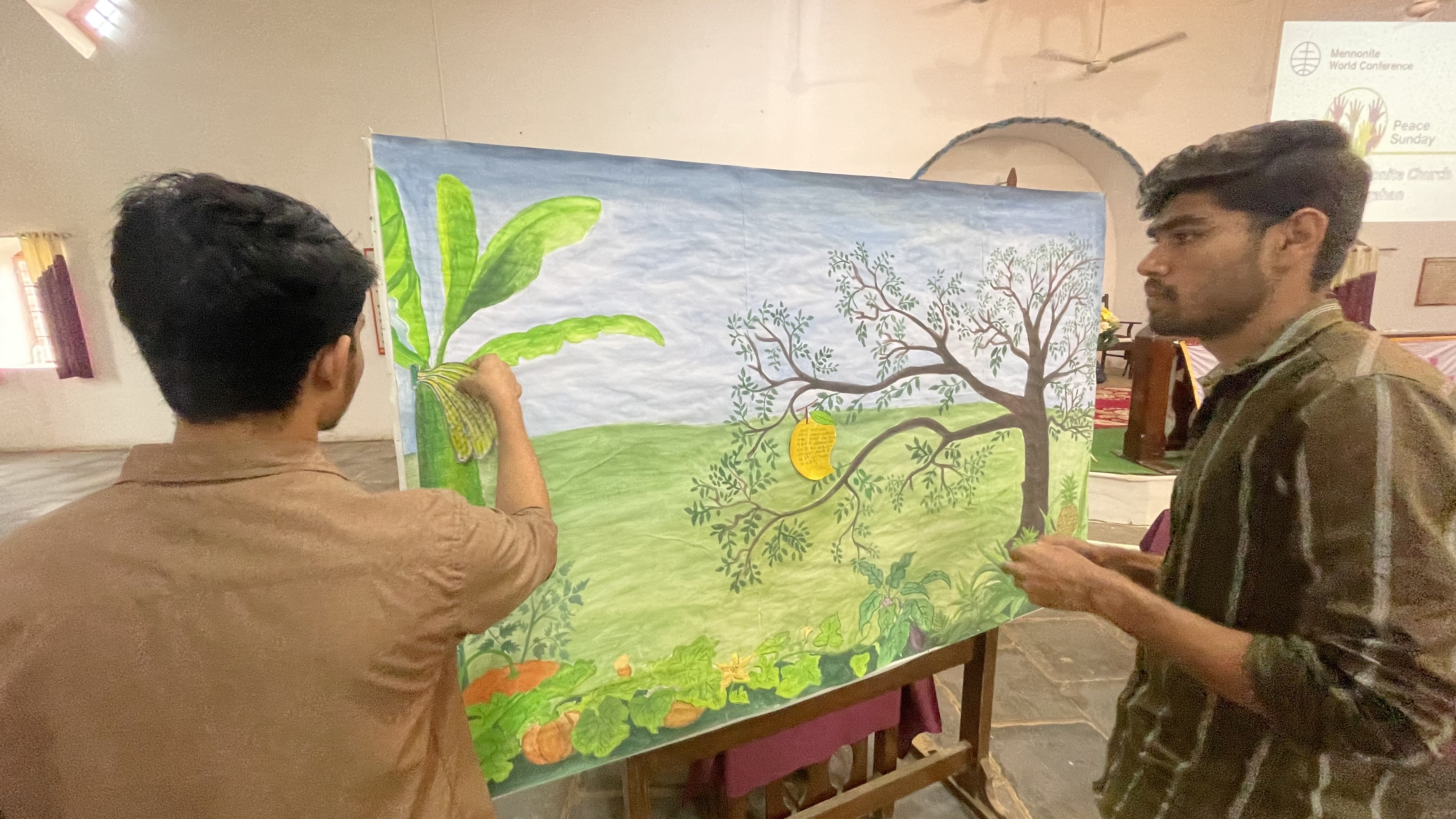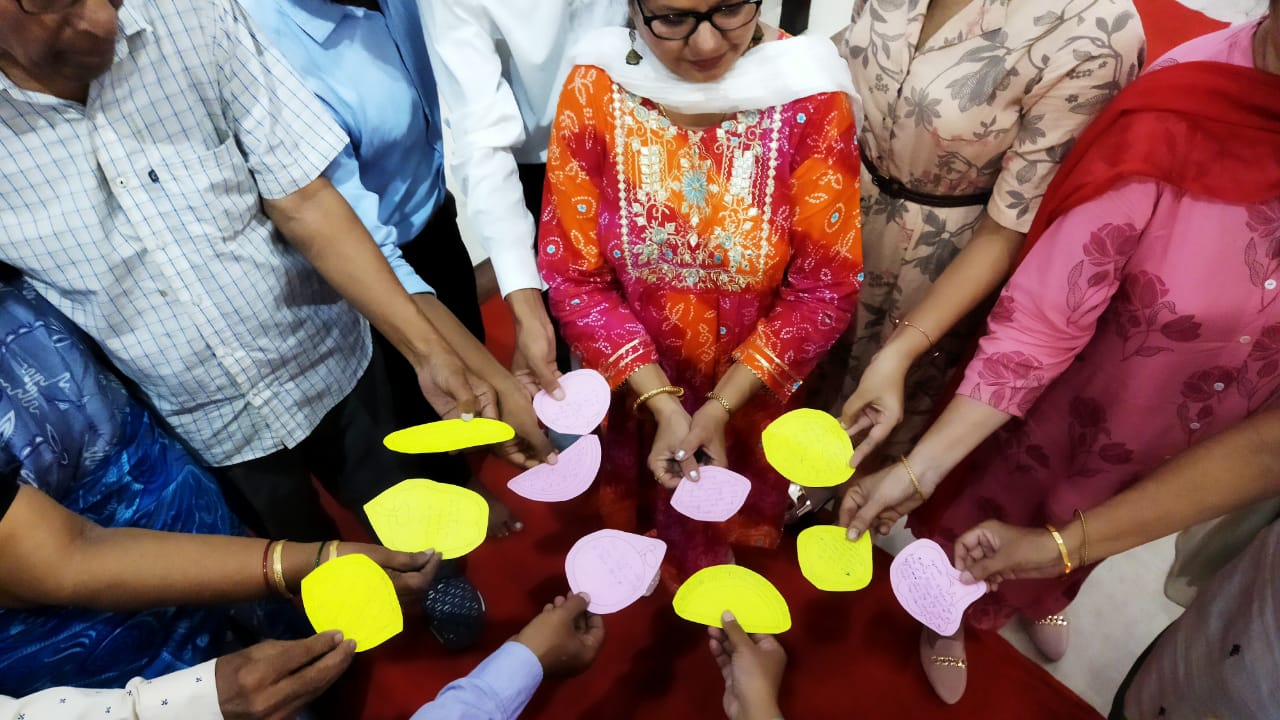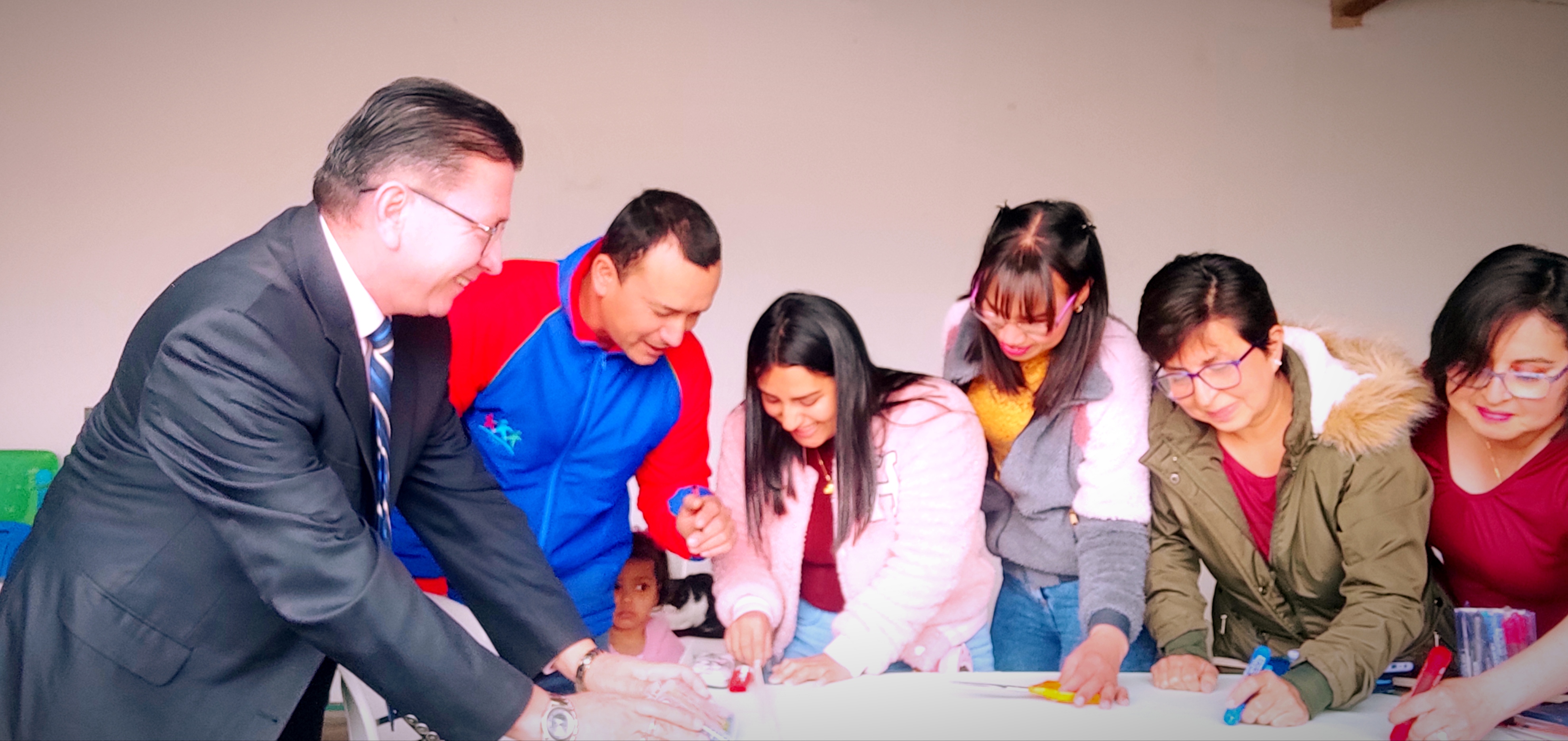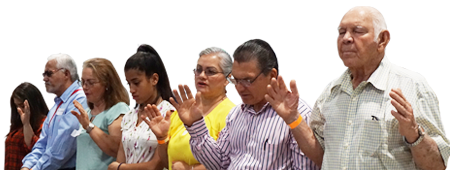Posted: July 26, 2023 | Category: Worship Resource
- Worship Resource
Being a family: redrawing the images and borders
While he was still speaking to the crowds, his mother and his brothers were standing outside, wanting to speak to him. Someone told him, “Look, your mother and your brothers are standing outside, wanting to speak to you.” But to the one who had told him this, Jesus replied, “Who is my mother, and who are my brothers?” And pointing to his disciples, he said, “Here are my mother and my brothers! For whoever does the will of my Father in heaven is my brother and sister and mother. (Matthew 12:46-50, NRSVU).

Many years ago, I sat in a family psychology class at a university in Colombia. One of the tools we were learning involved drawing our “social network.”
The exercise was to imagine yourself going through a rough time in life, and then draw – using different symbols – the people that you would identify as part of your network of support. You would include both people that you recognized as very close to you and people who were perceived to be a bit more distant yet somehow present in times of unrest. This sense of proximity/distance was then reflected in the drawing. The closest people were depicted near to the centre of the paper, while people that were perceived as more distant were depicted farther away from the centre.
One of the areas of attention of this exercise was family – and the function that family members play as network of support. As we completed the exercise, it was fascinating to see the different family compositions and shapes among us. Some would draw friends as family: my classmates felt as though these friends were so close that they could be perceived as family. Others would not include one of their parents or relatives at all since they were not perceived as supportive or perhaps because the relation was damaged or broken.
The result was that all families were unique! None of the drawings were equal to the others.
If we were to do this exercise in our congregations, the likely outcome would also be different family drawings and images: they would be diverse and they are all part of us!
Seeing this, the professor asked: what is family and who gets to be part of it?
After some student responses were discussed, the professor concluded: family is not so much about sharing DNA as it is about perception, about the quality of the bonds with people.
In other words, it was more important to identify what people perceived to be their “family” in moments of distress than knowing with whom they were biologically or legally related.
This response draws me back to Matthew 12 and how Jesus challenges and re-draws some of the images of family that we have.
First, as we can see from Jesus’ own question and response regarding who his mother and siblings are, family is not prescribed by a given biological or legal structure but shaped by the quality of relationships.
Instead of using the common images about parenthood or siblinghood of his time, Jesus focuses the attention more on relationships with his disciples and followers. Jesus emphasizes how those relationships are so significant that they can be described as family bonds. Seeking to witness to God’s will seems to be an important factor for people to join in the “family” that Jesus refers to.
As we live in a world that gives so much attention to certain images of family (forgetting how social construction has shaped our ideas of who is included and what a family is supposed to be) we tend to lose sight of what lies at the centre: relationships. The quality of the relationships – not a given structure or composition – is what makes a “family” a space in which people can embody just and peaceful relationships with one another, witnessing to God’s shalom.
To emphasize justice and peace as God’s will is something we have learned from many AnabaptistMennonite siblings of faith in different times and contexts. In this regard, it is not surprising that we can refer to our communities and congregations as “chosen” families, as parents and siblings with whom we have committed to walk and who have committed to walk with us—as we seek to witness to God’s will together.

Secondly, family is not characterized by the absence of conflict or tension, but more about how these are addressed.
Just like the exercise in the psychology class, the key question was not about whether the family relations were conflict-free but rather about how close we perceive other family members to be – especially when we look for support. This means that the bonds of family are truly tested amid rough times and experiences, and how those are handled.
Disagreements and tensions existed among the disciples and between the disciples and Jesus. Some of those are reported in the biblical stories. The existence of these differences did not compromise Jesus’ perception of parenthood and siblinghood with his disciples and followers. According to Jesus’ words, what enabled this sense of familiarity beyond conflicts and tensions is the honesty and depth of our attempts to discern God’s will in the midst of conflict.
Discerning God’s will and how to witness to it is not always easy within our global Anabaptist-Mennonite family.
On many occasions, there are different perceptions as to how that witness should be embodied and what it implies in different contexts. And yet, in deciding to walk together as followers of Jesus, there is a commitment and willingness to deal with tensions and conflicts in ways that are consistent with God’s shalom.
To emphasize the quality of the relationships as a key dimension to understand what it means to be a family implies to be conscious about the constant need to nurture and care for our relationships. While at times we could be more distant – or perceive the other as distant – there is always the possibility to come closer again, to change the dynamics.
Restoration, healing and reconciliation are signs of this. They are possible gifts to be experienced as we engage actively in recognizing the existence of wounds and seeking to heal them – being transformed in this process.

And third, being family is a dynamic process, not a static reality.
Another implication of seeing how Jesus emphasizes family as people who witness to God’s will is that the borders of family can be redrawn. We can relate with and find new relations in others who are also seeking to witness to God’s will. People with other backgrounds, from other contexts, congregations, churches may all be family as they witness to God’s purpose.
We can neither contain nor restrict God’s will. That means our family can always be bigger than we expect or imagine it to be.
When we think about witnessing to God’s shalom, we are reminded that “peace” is not merely an Anabaptist-Mennonite theme. It is rather God’s will, which means that it can be embodied and embraced among different people. In that sense, people from other denominations and faiths can also witness to God’s peace, and are, therefore, our potential relatives. They can be our “aunts,” “uncles,” “cousins,” in an enlarged image of family.
May our God of peace guide and strengthen us as we nurture bonds with an ever-growing family of siblings and relatives who are discerning God’s will.
—Andrés Pacheco Lozano is research assistant to the Chair of Peace Theology and Ethics at the VU University Amsterdam and lecturer in the Doopsgezind Seminarium (Dutch Mennonite Seminary). Andrés Pacheco Lozano is co-director of the Amsterdam Center for Religion, Peace & Justice Studies and a post-doctoral researcher in the Center for Peace Church Theology at the University of Hamburg (Germany). A member of Iglesia Menonita de Colombia, he lives in the Netherlands.


Join the Conversation on Social Media
FacebookTwitterInstagramFlickrYouTube